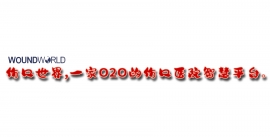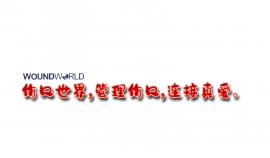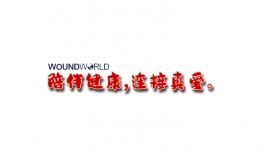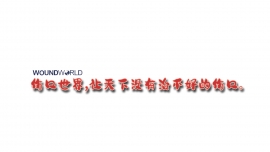文献精选
David Morris, Probal Moulik
Symptoms of pancreatic cancer often present late, and most are non-specific and thus Misinterpreted. Although a rare condition, the prognosis for pancreatic cancer is very poor, with a 5-year survival rate of 7.3%; however, this improves to 30% for early-stage diagnosis. Prediabetes or diabetes are found in around 80% of people diagnosed with pancreatic carcinoma and, importantly, are often identified a year or two ahead of this diagnosed. Thus, new-onset diabetes represents an opportunity for early detection of pancreatic carcinoma. Through this case report of an older gentleman with new-onset diabetes and a normal BMI, the authors discuss how healthcare professionals can identify people who might be at risk of pancreatic cancer, along with the differential diagnoses, and what actions they should take.
Authors
David Morris, Retired GP and Specialist Doctor in Diabetes, Undergraduate Clinical Tutor, Keele University; Probal Moulik, Consultant Endocrinologist, Shrewsbury and Telford Hospitals NHS Trust.
Citation: Morris D, Moulik P (2023) Case report: Pancreatic cancer – assessing diabetes in a thin elderly person. Diabetes & Primary Care 26: 217–21
Case presentation
Simon, a 76-year-old man with a two-year history of type 2 diabetes, sought a private endocrinology consultation because of ongoing symptoms of weight loss and fatigue. He also reported loss of appetite but denied polyuria and polydipsia. There had been no significant abdominal pain and no change in bowel habit.
Metformin had been commenced shortly after the diagnosis of diabetes but was discontinued because of gastrointestinal intolerance. Dapagliflozin had been tried but was stopped because of continued weight loss. Simon was now taking alogliptin but good glycaemic control remained evasive.
Past medical history: Hypertension; dyslipidaemia; peripheral vascular disease.
Medication: Amlodipine 5 mg once daily; atorvastatin 20 mg once daily; clopidogrel 75 mg once daily; alogliptin 25 mg once daily.
Social history: Retired; non-smoker; alcohol 9 units/week.
Family history: One brother with type 1 diabetes; one brother with diet-controlled type 2 diabetes; one brother with pancreatic cancer.
Examination: Blood pressure 128/67 mmHg; BMI 19.4 kg/m2 . Cardiovascular and respiratory systems unremarkable. Abdomen – palpable liver edge, no other masses.
What is your clinical assessment of the situation?
What further investigations would you consider?
Tirzepatide (Mounjaro®) is a once-weekly, injectable glucose-lowering medicine newly available in the UK. It is licensed for the treatment of type 2 diabetes and for weight management. This factsheet gives an outline of tirzepatide, its indications, benefits and side effects, as well as providing tips for prescribing. In particular, the article focuses on tirzepatide’s indication for glucose lowering.
Licensed indications
In the UK, tirzepatide has two licensed indications:
1. For the treatment of adults with insufficiently controlled type 2 diabetes as an adjunct to diet and exercise:
● As monotherapy when metformin is considered inappropriate due to intolerance or contraindications,
or:
● In addition to other medicinal products for the treatment of type 2 diabetes.
2. For weight management, including weight loss and weight maintenance, as an adjunct to a reduced-calorie diet and increased physical activity in adults with an initial BMI of:
● ≥30 kg/m2 (obesity),
or:
● ≥27 kg/m2 to <30 kg/m2 (overweight) in the presence of at least one weight-related comorbid condition (e.g. hypertension, dyslipidaemia, obstructive sleep apnoea, cardiovascular disease, prediabetes or type 2 diabetes).
Place in NICE guidelines
To date, NICE has only considered the glucose-lowering indication for tirzepatide. The TA924 guidance1 recommends tirzepatide for treating type 2 diabetes alongside diet and exercise in adults when it is insufficiently controlled only if:
● Triple therapy with metformin and two other oral antidiabetes drugs is ineffective, not tolerated or contraindicated,
and:
➤ BMI is ≥35 kg/m2 and there are specific psychological or other medical problems associated with obesity,
or:
➤ BMI is <35 kg/m2 , and:
■ Insulin therapy would have significant occupational implications,
or:
■ Weight loss would benefit other significant obesityrelated complications.
Lower BMI thresholds (usually reduced by 2.5 kg/m2 ) are recommended for people from South Asian, Chinese, other Asian, Middle Eastern, Black African or African–Caribbean family backgrounds.
This article will focus on the NICE-approved indication of tirzepatide for glucose lowering in people with type 2 diabetes.
Author: Steve Bain, Professor of Medicine (Diabetes), Swansea University Medical School, and Assistant Medical Director for Research & Development, Swansea Bay University Health Board.
Citation: Bain S (2024) At a glance factsheet: Tirzepatide for management of type 2 diabetes. Diabetes & Primary Care 26: [Early view publication]
Andrew Sharpe, Matt Allen and Naseer Ahmad
Diabetes is a pervasive and lifelong condition and poses significant challenges, with one of its most debilitating complications being foot diseases, particularly foot ulceration. This condition not only places individuals at risk for infection but also represents a precursor to severe consequences, such as sepsis and lower-limb amputation (Lipsky et al, 2023). This article delves into the multidisciplinary role that is pivotal in mitigating lower-limb foot ulcer recurrence, a pervasive issue affecting a substantial portion of the diabetic population.
Citation: Sharpe A, Allen M, Ahmad N (2023) Transformative strategies in diabetic foot care: a comprehensive approach to lower-limb ulcer recurrence. The Diabetic Foot Journal 26(2): 40–42
Key words
- Diabetic foot care
- Lower-limb foot ulcer recurrence
Article points
1. Diabetes puts individuals at risk for infection but also represents a precursor to severe consequences such as sepsis and lower-limb amputation.
2. The multidisciplinary role is crucial in mitigating lowerlimb foot ulcer recurrence, a pervasive issue affecting a substantial portion of the diabetic population.
3. In addition, a more active highrisk population could ultimately be a lower-risk population with reduced expected mortality rates.
Authors
Andrew Sharpe is Advanced Podiatrist, Northern Care Alliance NHS Foundation Trust, Salford, Greater Manchester, UK; NIHR ARC-GM PreDoctoral Academic Fellow; Matt Allen is Consultant Podiatrist, Salford Care Organisation, Northern Care Alliance NHS Foundation Trust, Salford, Greater Manchester, UK; Naseer Ahmad is Consultant Vascular Surgeon, Manchester University Foundation Trust and Clinical Director Manchester Amputation Reduction Strategy (MARS)
This advertorial has been developed, organised and funded by the Boehringer Ingelheim and Lilly Alliance for UK healthcare professionals.
Dr Rahul Mohan has received an honorarium to support the development of this advertorial.
Jardiance® (empagliflozin) Prescribing information and Adverse event reporting information for Great Britain and Northern Ireland can be found at the end of this document
Rahul Mohan
Dr Rahul Mohan, GP Partner and Principal, Ruddington Medical Centre, Nottingham, GP Lead for the Rushcliffe Community Diabetes Service, Committee Member of the Primary Care Diabetes Society.
Citation: Mohan R (2023) Practical guidance addressing the national shortage of glucagon-like peptide-1 receptor agonists: From clinical experience. Diabetes & Primary Care 25: 101–4




